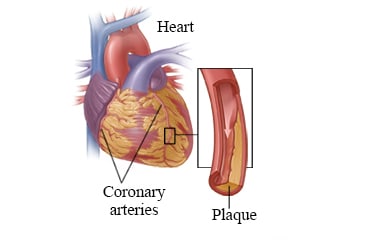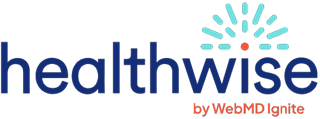What is bypass surgery?

Coronary artery bypass graft (CABG) surgery is used to treat coronary artery disease. The surgery helps blood flow around, or bypass, one or more narrowed or blocked coronary arteries. The arteries may have plaque buildup (atherosclerosis). Coronary arteries are the blood vessels that bring blood to the heart. The surgery is also called bypass surgery.
Your doctor will make a bypass using a healthy piece of blood vessel from another part of your body. Your doctor will attach, or graft, this blood vessel above and below the narrowed or blocked section of your artery. Blood is redirected through the new blood vessel. This restores blood flow to the affected portion of the heart muscle.
How is bypass surgery done?
The most common way to do bypass surgery is through a large cut, called an incision, in the chest. This is called open-chest surgery.
Your doctor will make a cut in the skin over your breastbone (sternum). This cut is called an incision. Then the doctor will cut through your sternum to reach your heart and coronary arteries.
A heart-lung bypass machine is usually used during the surgery to add oxygen to the blood and move the blood through the body. The doctor will use a blood vessel from your chest, arm, or leg to bypass the narrowed or blocked parts of your arteries.
The doctor may use wire to put your sternum back together. The wire will stay in your chest. You will get stitches or staples to close the incisions in your skin. The incisions will leave scars that may fade in time.
In some cases, the doctor may be able to do the surgery without using a heart-lung machine. This is called "off-pump" surgery.
What can you expect after bypass surgery?
You will stay in the hospital for at least a few days after the surgery. You will feel tired and sore for the first few weeks. Your chest, shoulders, and upper back may ache. These symptoms usually get better in 4 to 6 weeks. It may take 1 to 2 months before your energy level is back to normal. You may have some swelling or pain in the area where the healthy blood vessel used for the bypass was taken.
You will probably be able to do many of your usual activities after 4 to 6 weeks. But for at least 6 weeks, you'll avoid lifting heavy objects and doing activities that strain your chest or upper arm muscles.
After surgery, follow a heart-healthy lifestyle. This lifestyle can help lower your risk of a heart attack or stroke or other heart problems. It also can help the bypass graft last as long as possible. To have a heart-healthy lifestyle:
- Take your medicines as instructed.
- Eat a heart-healthy diet.
- Get regular exercise.
- Stay at a weight that's healthy for you. Talk to your doctor if you need help with this.
- Manage other health problems such as diabetes, high blood pressure, and high cholesterol.
- Do not smoke or vape. Also avoid secondhand smoke and the aerosol mist from vaping.
Smoking or vaping can make it harder for you to recover. It will raise the risk of your arteries getting narrowed or blocked again. If you need help quitting, talk to your doctor about quit programs and medicines. These can increase your chances of quitting for good. Secondhand smoke and vaping mist can also increase your risk for problems.
You may start a cardiac rehabilitation (rehab) program in the hospital. This program will continue after you go home. It will help you recover. And it can prevent future problems with your heart.
Follow-up care is a key part of your treatment and safety. Be sure to make and go to all appointments, and call your doctor if you are having problems. It's also a good idea to know your test results and keep a list of the medicines you take.
Where can you learn more?
Go to http://www.healthwise.net/patientEd
Enter I624 in the search box to learn more about "Learning About Coronary Artery Bypass Graft Surgery".
Current as of: October 2, 2025
Author: Ignite Healthwise, LLC Staff
Clinical Review Board
All Ignite Healthwise, LLC education is reviewed by a team that includes physicians, nurses, advanced practitioners, registered dieticians, and other healthcare professionals.

